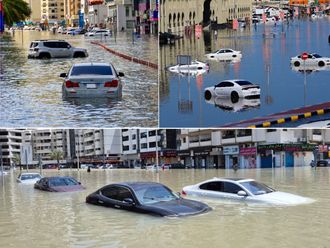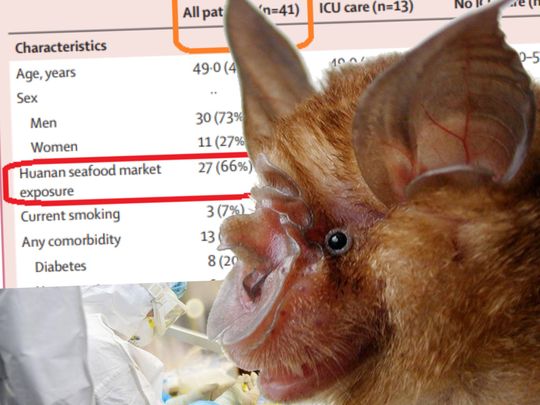
Highlights
- Latest images coming out of China are pretty, with no new COVID-19 deaths reported for nearly a month.
- China's ruling Communist Party imposed lockdown on tens of millions of people — first in Wuhan and then in the rest of Hubei province — from January 23, 2020.
- Back then, some in the western media had criticised China for what was first described as "draconian" restrictions in Wuhan and other neighbouring cities.
- Chinese authorities started lifting restrictions in late March.
- Virus now making deadly run in rest of Asia, Africa, Americas after ravaging Europe.
Dubai: Images coming out of China are pretty. They show signs of life returning to normal.
Shanghai Disneyland is back. Now, after months of closures, cinemas, entertainment venues and sports facilities in China are set to reopen.
Wuhan, in Hubei province, the first epicentre of the pandemic, has started to reopen for business.
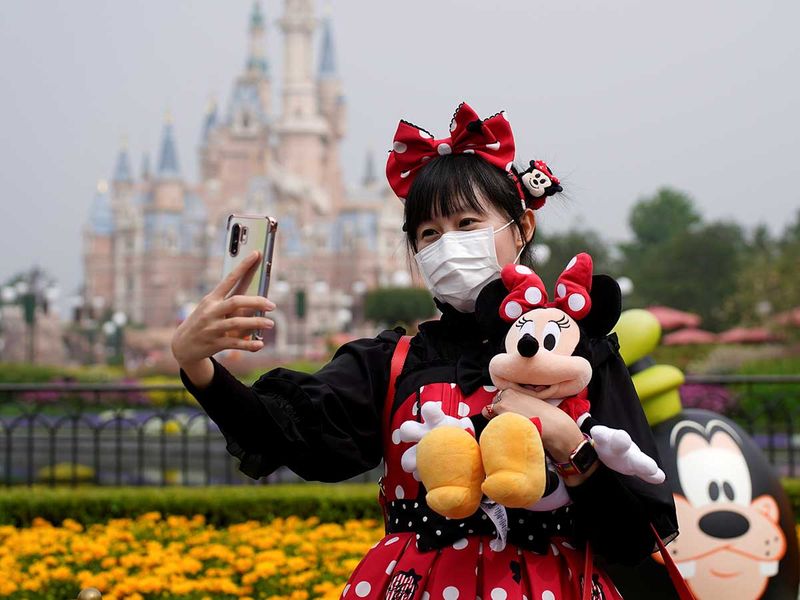
So is it going to be business as usual, from today?
Perhaps the images we see from the Mainland are indeed feel-good, cutie cuddly — like hyper-local, insignificant pixels of a much larger picture that's pretty ugly.
Here's why: Doctors treating coronavirus patients elsewhere in the world are seeing a range of odd and frightening syndromes.
SARS-Cov-2 is designated as largely a respiratory virus. But studies done by Chinese researchers show how the virus itself is present in the brain of monkeys who were challenged with the virus and dissected in a lab.
There's an emerging evidence of the virus' direct attack on the arteries, according Swiss clinical researchers. Studies in the US show aortic occlusion (big blood clot in main artery) in humans hit by the virus, besides the lasting scars it leaves on the lung tissues of recovered patients.
Latest developments in post-COVID-19 China:
- No reported coronavirus-related deaths for 24 consecutive days, as of May 10, 2020.
- The country is gradually reopening schools.
- The government has urged workers to return to work.
- Cinemas, entertainment venues and sports facilities across the country given permission to reopen.
- On Monday (May 11, 2020), China reported a second day of new cases of coronavirus in Wuhan.
- Local health officials said the new cases were all from the same residential compound, mostly among older people.
- There were also 11 new "asymptomatic" cases reported in wider Hubei province. China is recording symptomatic and asymptomatic cases separately.
- Two of the cases were imported into the country from overseas.
Exit strategy
As the first to begin the slow return to a semblance of normality, China is the one place the world is looking at for guidance on planning an exit strategy from coronavirus lockdowns.
In some ways, the central Chinese city of Wuhan has been held up as an example of what can be achieved through extreme efforts to contain the coronavirus.
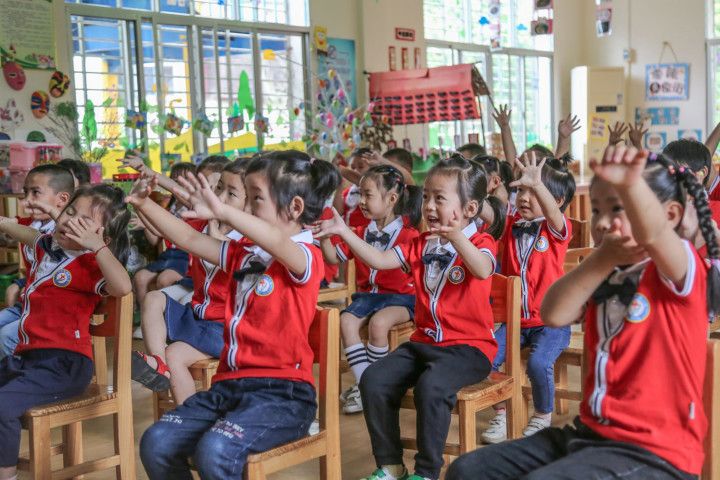
On April 6, 2020, China marked the end of the Wuhan lockdown with a light show. Many people who endured weeks of being hunkered down at home stepped outside for the first time in weeks.
Still, alongside the easing came lingering fear: A spike in infections along China's northern border with Russia has triggered concerns.
The official figure of the number of people infected in China is 82,901, with an official death toll of 4,633.
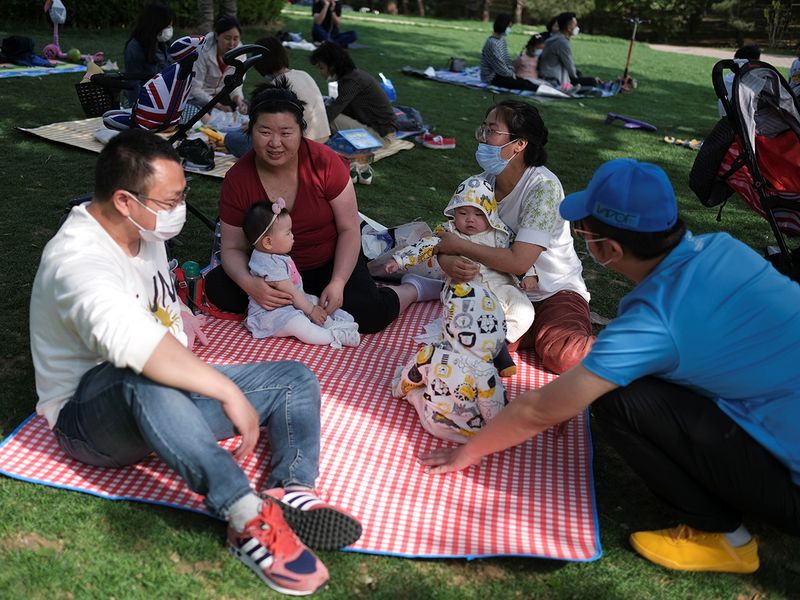
Don't blame China: An apologist's narrative
Amidst the pretty pictures of easing of restrictions, China has come under increasing scrutiny. There's international pressure building up to allow an unfeterred, scientific investigation into the origins of the virus.
People who speak for the Chinese Communist Party are pushing back, stating a version of their own narrative, yet opting not to answer the tougher questions.
The line of reasoning of China apologists like Einar Tangen, Chinese Affairs Economic Development Specialist and a former Chinese Provincial Government Adviser, goes something like this:
- “Don’t blame China for this pandemic. The Chinese are the first victims of this unfortunate outbreak. It could have emerged anywhere else. Be thankful it did not emerge in the US while [Donald] Trump is president.”
- “China locked down many of its cities, measures the western media once called ‘draconian’. But it worked. Now the world is doing it too, but you didn't call it such.”
- “Some countries acted fast and it worked. If others had acted sooner instead of later, like China did, it wouldn't be as bad. [If] you criticised us for the tough measures we had in the beginning, you only have yourselves to blame”.
- "Many countries ignored the warnings and thought they could do things better than the measures done by China. This whatever-China-does-we-can-do-better attitude is what's costing many lives in those countries. So why blame China?"
- “This pandemic is a pushback from nature. Don’t politicise it, by blaming China, in order to gain votes (in the next US elections).”
- “Yes, some of the local Chinese party officials were reticent in telling the world, initially. These officials have been removed and punished.”
- “You have to appreciate what China did, in defeating the pandemic.”
- “Be grateful for the PPEs [personal protective equipment] that China gave you.”
- “Yes, some of the PPEs may have been defective or sub-standard. But if China didn’t give them to other countries, it will be accused of hoarding them.”
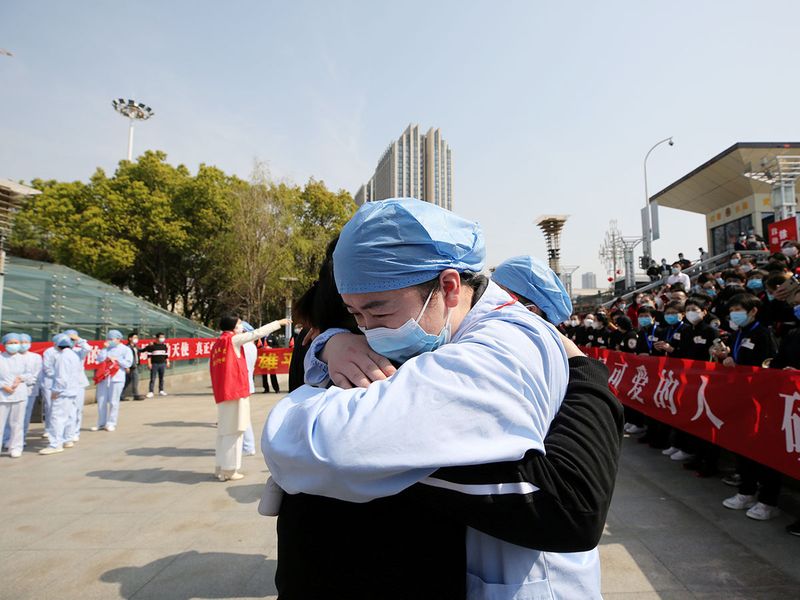
Epidemiologists, US intelligence sources and residents suspect Chinese authorities substantially undercounted coronavirus infections.
"It's clear that China feels under attack. And you can understand why, with these constant allegations... that they're hiding deaths, or that they somehow wanted this pandemic to happen. All I can say is we should be glat it didn't happen in the US. Because, otherwise we'll have Donald Trump playing for 2-1/2 months," Tangen said in YouTube interview.
Some key unanswered questions:
These lines, however, don't address the foremost questions in the mind of the global community still reeling from the outbreak. Key questions unanswered:
- Where did the virus really jump from?
- Who is "patient zero"? When did the person get the virus and from where?
- How many strains of this virus are out there?
- Why did you peddle the lie that it was from the seafood market?
- Why were the Chinese doctors who initially warned about it, punished, depriving China and the world of taking proper measures early on.
- Why were thousands of people allowed to travel from Wuhan to other continents when the Chinese officials already knew about it?”
- Why is Professor Shi Zhengli of the Wuhan Institute of Virology (WIV) not being allowed to talk?
- Why is the head of the China CDC not being allowed to talk?
- You blamed the “reticence” by local officials, who were made scapegoats; but we see it as a systematic drive to downplay and twist what had happened.
- It was an outright lie to force the Chinese doctors who blew the whistle and tried to warn the world early on about the atypical pneumonia, which was "SARS-like", and they were right.
- You have claimed there are 2,000 viruses in your labs, to the credit of your hard-working scientists who have discovered them in the last 12 years, when the world knows only about 2,000 more discovered in the last 200 years. What are the on-site checks you have conducted to ensure these viruses don't escape?
- Given these number of viruses that could jump to humans, how do you ensure proper biosafety are adhered to in order to avoid potential pandemics in the future?
Meanwhile, the hunt for “patient zero” is still on. The first reported case of the novel coronavirus in China can be traced back to November 17, reported the SCMP, citing government data.
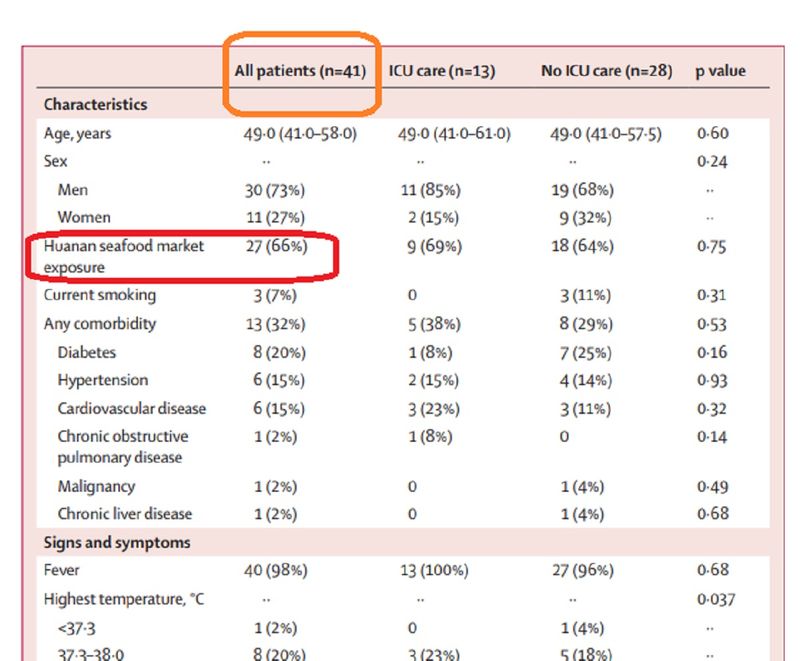
Chinese authorities had identified at least 266 people who were infected by COVID-19 in 2019 itself.
The SCMP reported some of the cases were likely "backdated" after health authorities had tested specimens taken from suspected patients. Whistle-blowers from the medical community suggest Chinese doctors only realised they were dealing with a new disease in late December.
To establish how the disease spread and improve knowledge of the size of that threat, scientists must determine how undetected and undocumented cases contributed to its transmission.
Since an epidemic was first reported in Wuhan, scientists have been trying to map the pattern of the early part of transmission. World Health Organisation declared COVID-19 a pandemic on March 12, 2020.
To establish how the disease spread and improve knowledge on the size of that threat, scientists must determine how undetected and undocumented cases contributed to its transmission.
In recent days, China’s narrative has changed
Some Chinese officials insinuated that the virus is an American creation, from a US Army lab. Another Chinese official suggested that the virus may have actually originated in Italy, while the pandemic was doing its deadly run in that country.
Amidst the trade of barbs, it's clear former alliances are falling apart, and fast. China, however, has changed tone recently.
On May 8, 2020, China said it supports a World Health Organisation-led review into the global response to the coronavirus outbreak, but only "after the pandemic is over".
The comments from Foreign Ministry spokeswoman Hua Chunying came as China faced increasing global pressure to allow an international investigation into the origins of the pandemic.
A promise of 'open, transparent, inclusive' review
The review should be conducted in an "open, transparent and inclusive manner" under the leadership of WHO chief Tedros Adhanom Ghebreyesus, Hua said at a press briefing.
But mark the phrase: "Review into the global response to the coronavirus outbreak".
There's no mention of any intention to dig into its origins, but only a query into the global response. Hua did not indicate that the proposed review would also probe the origins of the virus, and the reported cover-up.
Will the review be, in fact, used as an opportunity for China to blame the world some more? Will the world be told to forget about the death and destruction wrought by a virus that originated in the only Chinese city where it keeps a new P-4 virology lab and China's CDC facility?
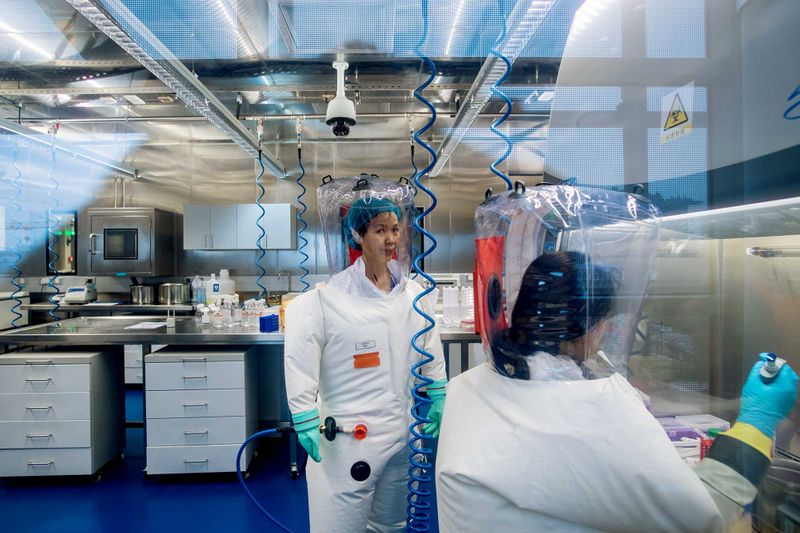
The official narrative, one that has been parroted by the WHO, has been that the novel coronavirus emerged from the wet market in Wuhan.
Never mind if China's own medical researchers showed this not to be the case.
On May 12, 2020, a WHO spokesperson said the review of the pandemic will be a "free and frank" discussion on what went wrong, what went right, and what we're going to do better.
Questions remain about pandemic's origins
One of the earliest confirmed reports go back to November 17, 2019, in which a patient sufferent from "pneumonia of unknown cause", a 55-year-old man from Hubei, China, was reported by clinicians, according to a SCMP report, citing official records.
On December 1, 2019, doctors in Wuhan reportedly saw, again, a series of "pneumonia cases of unknown cause" emerging, reported The Lancet.
From December 29, 2019, to January 4, 2020, Chinese doctors writing for The Lancet saw six members of a family who travelled to Wuhan from Shenzhen, all got infected with “unexplained pneumonia” after returning to Shenzhen, Guangdong province, China.
The researchers, who analysed genetic sequences from these patients, also saw evidence of a person-to-person transmission of the virus. The researchers wrote: "One of the family members had contacts with Wuhan markets or animals, although two had visited a Wuhan hospital. Five family members (aged 36-66 years) presented with...(symptoms) 3-6 days after exposure.” An additional family member who did not travel to Wuhan also fell ill.
It was on January 1, 2020, when Chinese authorities shut down the Huanan Seafood Wholesale Market, which, until then, was seen as the origin of the outbreak.
China admits 'shortcomings' in health-care system
In a rare admission of weakness, a top Chinese health official admitted on May 9, 2020, that the coronavirus outbreak exposed "shortcomings" in China's public health-care system.
Li Bin, deputy director of China's National Health Commission, admitted that China's health-care system had not been adequately prepared, which had left holes in China's response.
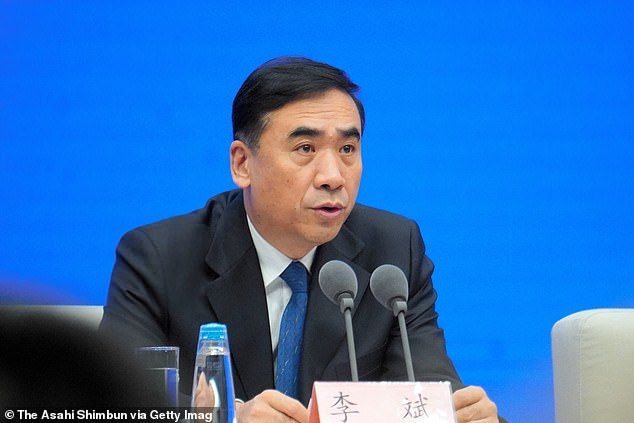
The official said that "reforms" are underway to improve the country's disease prevention and control mechanisms.
China has faced criticism both at home and abroad for downplaying the virus and concealing information about the outbreak when it first emerged in the central city of Wuhan in December.
There are growing calls, led by the US and Australia, for an international inquiry into the issue, which has become a key flashpoint in rising tensions between Washington and Beijing.
Beijing has insisted it has always shared information with the WHO and other countries in a timely manner.
Big test
"The novel coronavirus outbreak was a big test that revealed China still has shortcomings in its major epidemic prevention and control system, public health systems and other aspects of responding (to an emergency)," Li was quoted by AFP as saying.
China's health authority will build a "centralised, unified and efficient" leadership system that will allow it to respond faster and more effectively to any public health crisis in the future, Li added.
The comments came after US President Donald Trump ramped up criticism of China this week, saying the virus "could have been stopped in China".
Big data
Officials were also discussing how to "modernise" the disease control and prevention system by using big data, artificial intelligence, cloud computing and other technologies that will help predict outbreaks more accurately and enhance preparedness, Li said.
The commission was also considering ways to revise public health laws, strengthen international exchanges and "actively participate in global health governance", Li added.
Questions linger
As China re-opens, elsewhere in the world, it's a different story. In India, Brazil's favelas and African cities, the coronavirus crisis is just getting started.
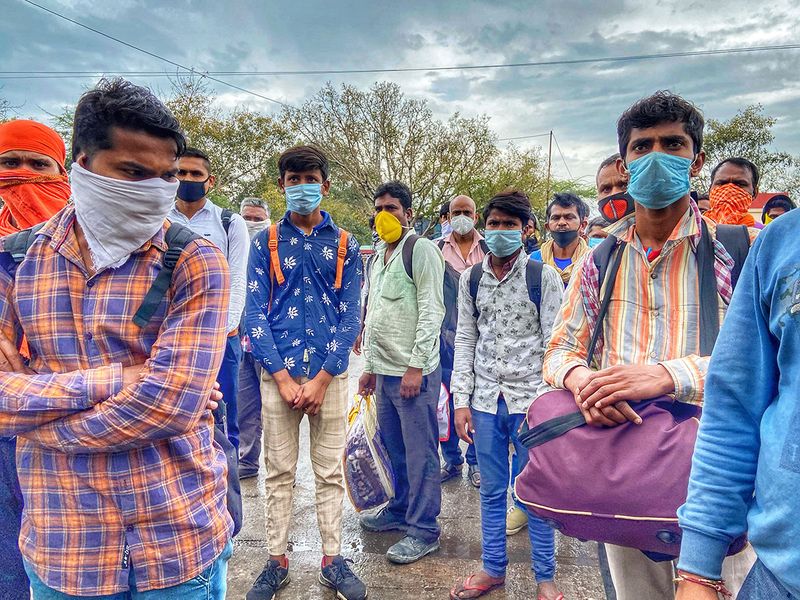
Many European nations have also started the tricky task of navigating out of lockdowns imposed to halt the spread of the virus. Swathes of the US ease restrictions on movement — despite still rising rates of infection — even as citizens chafe under rules that many say are government overreach.
America's top medical expert Dr Anthony Fauci warned that too hasty a return to normal could spark a "second wave of infections", and pointed out that restrictions will have to remain until there is a vaccine. Epidemiologists, US intelligence sources and residents suspect Chinese authorities substantially undercounted coronavirus infections.
Will China be able to keep its role as the world’s factory? Will its leaders then face a day of reckoning?
Will nations now slow down the march of globalisation, lessen their dependence on other countries for food, medicines and other goods?
Will COVID-19 raise the profile of countries like India and Brazil as alternative manufacturing bases?
Will the world pardon China for downplaying the virus and concealing information about the outbreak when it first emerged in Wuhan?
What questions do you have in mind? Email: readers@gulfnews.com




